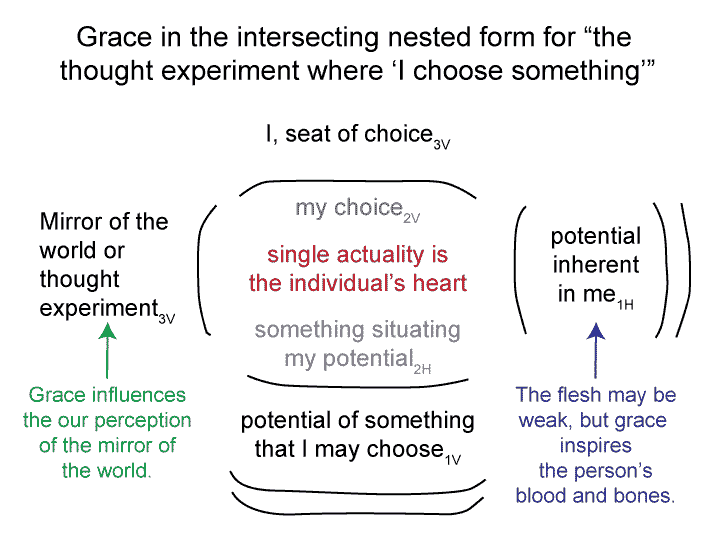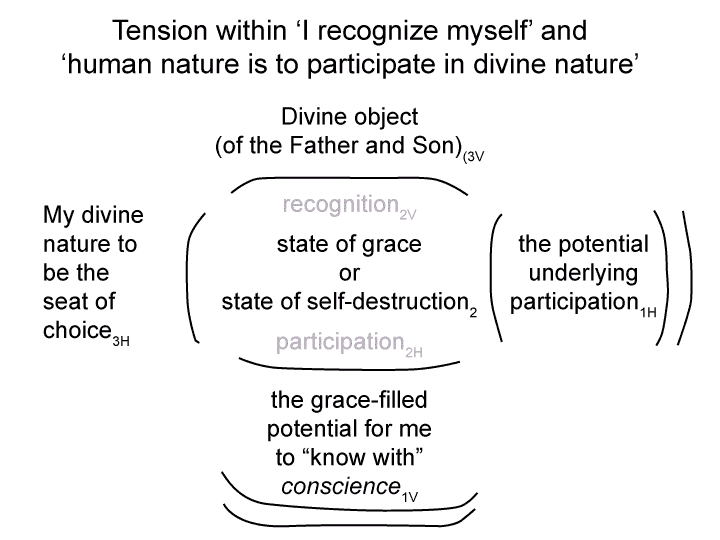Man and Sin by Piet Schoonenberg (1964) 2.3 BAJ
[Reason itself does not require grace. Or does it?
Since I, seat of choice3V, contextualizes the heart2, and since the heart is contextualized by the mirror of the world3H, then reason may (inadvertently) open the person to the influence of grace through the horizontal normal context.
Reason may change the heart2 just enough that the person’s intuition1H may feel grace-filled inspiration.]


